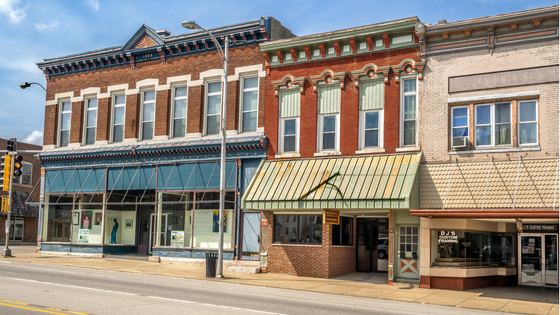Do all urban areas offer the same potential for applying open office concepts? Or could the urban success gap be a limitation? This article explores those questions and offers some insight to help derive answers. But first, let’s consider the urban success gap.
The Urban Success Gap
Richard Florida, a well-known smart growth advocate and author of The Creative Class, is now addressing what he refers to as the downside of urban revival in his book The New Urban Crisis. We are constantly being told that the income gap is widening between Americans, but Florida also notes the corresponding widening gap between the nation’s cities. Some are not realizing the benefit of high tech innovation, skyrocketing property values, and the development of walkable, vibrant urban areas. In fact, they are stuck in the tidewater of the old economy. They are the cities left behind.
The Open Office: Opportunities for Expansion
In recent years, much has been written about applying the Google-style open office approach, originally developed for high tech industries, to a variety of other business types. It can sometimes be surprising how these concepts can be adapted to businesses you might not consider at all similar to high tech, such as the typical attorney’s office. The opportunities for effectively expanding the application of the open office approach seem almost limitless. But are they?
The Open Office: Limitations
To date, there has been limited discussion on how the regional urban economic environment and its resulting real estate market impacts the feasibility of open office space design. Everyone looks at how design innovation can be applied in our country’s “superstar” metro areas, such as the Silicon Valley, Austin (Texas), New York City, or Washington D.C. But what about those other cities – the less prosperous ones like Dayton (Ohio), Tulsa (Oklahoma), or Allentown (Pennsylvania)? Shouldn’t we also consider how to adapt open office design standards to take into consideration the economic environment and real estate issues of the non-superstar cities?
A Comparison
Now you may say that these cities have different office uses as a whole, so of course their specific office designs will vary from what might be proposed in New York City or Washington D.C. However, let’s go back to my previous example of the attorney’s satellite office space design. This is a general-purpose plaintiff’s firm dealing with traffic violations, disability, medical malpractice, and personal injury. In other words, it is a firm that you would find in superstar and left-behind cities alike.
But many of the reasons behind the development of this satellite concept relate to the specific characteristics of the Washington D.C. metropolitan area. These include factors such as traffic congestion, the difficulty of clients traveling from more distant locations, and the high cost of real estate in the city core. So, the idea of expanding to several smaller satellite locations makes a lot of sense. And to make this expansion feasible from a cost standpoint, incorporating creative, open office design features makes sense as well.
Would such a satellite law office concept work in a smaller city like Dayton, Ohio? It might, but would the additional cost for expansion be warranted? Perhaps a more traditional consolidated attorneys’ office in downtown would function just as well at a reduced cost.
More generally, is the open office as desirable a solution for any business type in a less prosperous urban area with minimal traffic congestion where there is little need to telecommute, and little need to accommodate telecommuters with touchdown stations, getaway booths, and similar open office features?
Considering Urban Differences
We continue to expand our knowledge of how to apply open office design criteria for a wide range of project types. As we become more sophisticated in these design efforts, I am convinced that we will need to also consider the ramifications of varied real estate characteristics and the diverse regional urban environment. Are the considerations involved in designing a state-of-the-art, open office in superstar Silicon Valley the same as those involved in designing a state-of-the-art open office in Dayton? I’m going to go out on a limb and say, “no way.”
When planning an open office, we often rely on surveys that try to hone in on employee work characteristics. But admittedly, none of the surveys I’m familiar with try to identify the urban area’s unique physical and economic characteristics. Perhaps they should.
Perhaps our surveys should also consider:
- traffic congestion levels
- metropolitan area sprawl
- metropolitan area travel times
- downtown real estate costs
- downtown vacancy rates
As an architect, I always enjoy the challenge of expanding the envelope – of applying creative design concepts to new and even dissimilar situations from those I have dealt with in the past. But sometimes these creative design concepts simply do not apply. In cities where there is no traffic congestion, no difficulty in traveling from locations outside the downtown, and a relatively low cost of real estate in the city core, perhaps traditional office forms can continue to be effective.
I genuinely believe that an understanding of the way the local urban environment affects office design is certainly a significant – and currently overlooked – factor. A factor that should be more actively explored. I would be interested in hearing back from you about your views on applying open office concepts in less prosperous cities.









.jpg)


.jpg)
.jpg)
.jpg)
-1.jpg)
.jpg)
.jpg)
.jpg)
.jpg)

